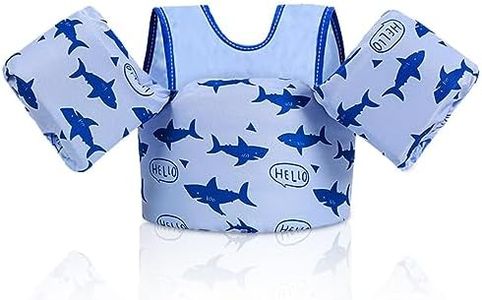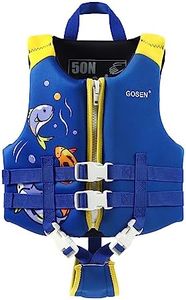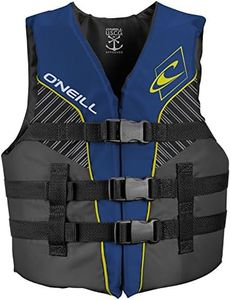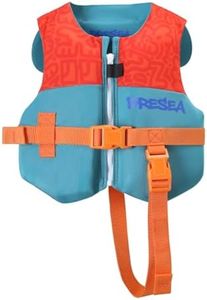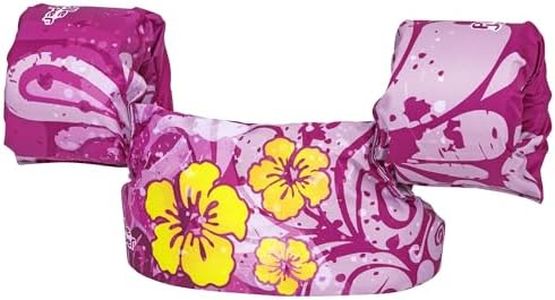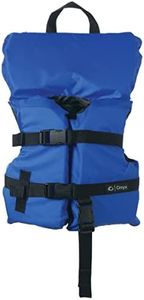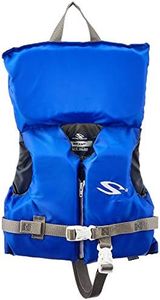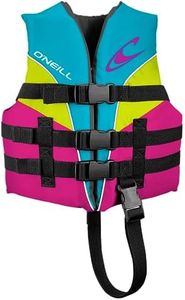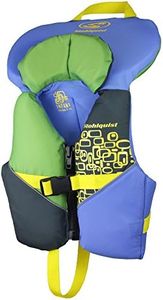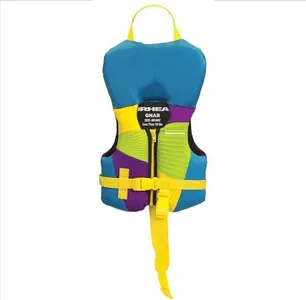We Use CookiesWe use cookies to enhance the security, performance,
functionality and for analytical and promotional activities. By continuing to browse this site you
are agreeing to our privacy policy
10 Best Infant Life Jackets
From leading brands and best sellers available on the web.Buying Guide for the Best Infant Life Jackets
Choosing an infant life jacket is a crucial decision that can ensure your child's safety during any water activity. When shopping for one, focus on fit and safety certifications before anything else. Features like comfort, visibility, and ease of use are also key. Remember, infants have unique needs compared to older kids or adults, so picking the right specs will help keep your child safe and comfortable.Fit and Weight CapacityFit refers to how snugly the life jacket sits on your infant, while weight capacity indicates the user’s weight range the jacket is designed for. The right fit is extremely important because a loose jacket may slip off, while an overly tight one might cause discomfort. Weight capacity helps ensure the jacket will provide adequate buoyancy; these ranges are typically marked on the tag (like 8-30 lbs). Always choose a jacket within your child’s current weight range. Secure fit and correct weight capacity should be your top priority for safety and comfort.
USCG CertificationThis means the life jacket is approved by the U.S. Coast Guard, indicating that it meets strict safety standards. Not all flotation devices provide life-saving capabilities, but a USCG-approved jacket is tested for actual water emergencies. Most infant jackets should be USCG Type II or Type I, designed to turn a child face-up in the water. Always check for this certification to ensure the product provides real protection rather than just floating support.
Head SupportHead support is a padded section, often at the back, meant to keep your baby's head above water and out of harm’s way. This is especially important for infants who can’t yet hold up their own heads. Some jackets have larger, cushioned headrests, while others have minimal support. Pick a life jacket with ample head support if your child is very young (under one year or hasn’t developed strong neck muscles yet).
Grab HandleA grab handle is a strong loop at the top of the life jacket that lets you quickly and easily lift your child out of the water. Handles vary from simple fabric loops to padded grips. Make sure the jacket has a sturdy, well-attached handle if you’ll be boating or in situations where quick retrieval could be necessary. This feature is especially helpful for parents, as infants can be slippery and hard to grab when wet.
Leg Straps/Crotch StrapLeg or crotch straps prevent the jacket from riding up over your baby’s head or slipping off entirely. Some jackets offer single or double straps; all should fit comfortably between the legs. Look for life jackets with adjustable, padded crotch straps if your infant is small or wiggly, as this will ensure the jacket stays securely in place.
Color and VisibilityThe color of the jacket impacts how easily your child can be seen in the water. Bright, high-visibility colors (like orange, yellow, or neon shades) are best because they stand out against the water’s surface. Avoid dull colors that can blend in with surroundings. For maximum safety, opt for the brightest available option, especially in crowded or natural bodies of water.
Comfort and MaterialComfort depends on the softness, breathability, and how lightweight the jacket feels. Materials range from soft fabrics to stiffer vinyl coatings, and the design may affect how much your infant can move. Comfort is important for keeping your child happy and less likely to fuss. If your child is sensitive to textures, choose a jacket with softer inner linings and minimal seams.
